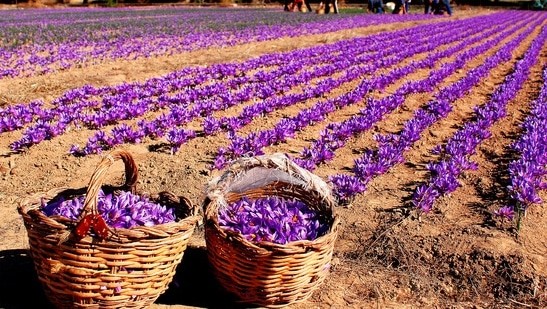Pulwama : On a serene summer day in 2024, Tanzeela, a young resident of Khrew village in Pampore tehsil, welcomed a classmate to her home. The visit seemed uneventful until a few days later when her friend called with a concerning update. She had developed a severe chest infection during her stay in Khrew and was struggling to recover. Along with her complaint came a scathing remark: her friend taunted her for living in a place where pollution levels were “unbearable,” especially for those visiting from outside the area.
The comment left Tanzeela uneasy. Her once-unquestioned environment now felt suffocating as she began to evaluate her surroundings with fresh eyes. What she discovered was alarming.
Khrew, a scenic bowl-shaped area surrounded by mountains, was home to numerous cement factories releasing enormous amounts of smoke and dust into the air. The toxic pollutants had infiltrated the daily lives of the locals, who had grown so accustomed to the conditions that they no longer noticed the harm.
“What we inhale is toxic air, and we don’t even realize it because we have adapted to it,” Tanzeela remarked during a seminar at the town hall in Khrew to observe National Pollution Control Day 2024.
The event, which brought together speakers from diverse backgrounds, served as a platform to discuss the devastating effects of industrial pollution on human health, ecosystems, and agriculture in the area.
The speakers highlighted the heavy toll the cement industry has taken on the region’s agriculture, especially saffron cultivation.
Khrew and its neighbouring villages, including Satpukhran, Nagandar, and Bathen, were once renowned for their saffron fields, producing a significant share of Kashmir’s prized spice, the speakers observed.
However, decades of unchecked industrial activity were blamed for transforming fertile saffron fields into barren land.
“Thousands of acres of fertile land have become barren due to the dust,” one of the speakers lamented, emphasising that cement pollution has been a major factor in the decline of saffron production over the years.
The speakers informed that in Pampore, which is celebrated as the heart of saffron farming, the area under cultivation has shrunk by 60%.
They highlighted that industrial encroachment near saffron fields has severely affecting both the quantity and quality of production. The desertification of around 43,000 kanals of saffron land in the Khrew area, caused primarily by industrial pollution, was another alarming statistic presented during the seminar.
Professor Dr. Javid Ahmad Mugloo, Chief Scientist and Head of KVK Malangpora, explained how emissions from cement factories contribute to the crisis. He detailed how pollutants such as Nitrogen oxides, sulphur dioxide, Carbon monoxide, and cement dust settle on saffron plants, disrupting their natural processes. “Cement dust clogs the stomata of leaves, reducing chlorophyll production, interrupting light absorption, and causing early leaf fall,” he explained.
He believes that stunting of plant growth and degradation of crocin content—essential for saffron’s distinct colour and therapeutic properties—has had a profound impact on the production.
Dr. Rauf ur Rafiq, a climate activist, and an organiser of the seminar mentioned his research findings on the impact of cement pollution on saffron cultivation in Khrew.
His study revealed that cement dust alters vegetation characteristics and affects natural plant communities, disrupting the delicate balance between species.
He explained that saffron plants closer to industrial zones exhibited noticeable physiological changes compared to those growing farther away. “Data shows that chloroplast pigment levels, leaf pH, and leaf size are adversely affected by cement industry pollution. As the distance from the industry increases, growth improves,” he said.
Dr. Rauf also highlighted how particulate deposition, even without visible physical damage, interferes with plant physiology. He noted that fine cement dust particles block stomata, disrupting gaseous exchange and reducing chlorophyll content—an indicator of air pollution sensitivity. This leads to detrimental changes in plant health and productivity.
Speakers at the seminar called for immediate intervention.
Dr. Rauf suggested developing green belts around industrial areas as a potential solution to mitigate pollution levels.
“Such initiatives, combined with stricter regulations on industrial emissions, could help protect the remaining agricultural land and restore some balance to the ecosystem,” They said.








